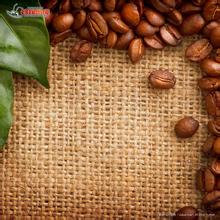Introduction to varieties of Ethiopian coffee bean flavor description grinding scale treatment method
Introduction to varieties of Ethiopian coffee bean flavor description grinding scale treatment method
Ethiopia has a unique flavor that is different from other flavors and provides customers all over the world with a wide range of taste choices.
In the highlands of southwestern Ethiopia, the Kaffa, Sheka, Gera, Limu and Yayu Senri coffee ecosystems are considered the hometown of Arabica coffee. These forest ecosystems also have a variety of medicinal plants, wild animals and endangered species.
The highlands of western Ethiopia have given birth to new varieties of coffee that are resistant to fruit disease or leaf rust. Ethiopia has many world-famous types of coffee. Some of the major types of coffee are famous for their unique aroma and flavor, including the following:
Limu Coffee
This kind of coffee grows in areas ranging from 1400 to 2000 meters above sea level. After wet processing, this kind of coffee has a rich fragrance, a full fruit with moderate acidity and alkalinity, high quality and attractive spicy flavor. It is estimated that out of 49000 hectares of cultivated area, the average annual production of this coffee is 29000 tons (equivalent to 480000 bags of 60 kg coffee).
Getachew Mengistie, director of Ethiopia's Bureau of intellectual property, bluntly pointed out that farmers sell raw beans for $1.45 a pound, while Starbucks sells for $26 a pound in the United States, 18 times the price difference between the two places. The reason is that Ethiopia does not know how to use intellectual property rights to create value for farmers. As long as it has the name of Ethiopian boutique beans, it can be marketed in the United States at three times the price of ordinary commercial beans. You know, investing in baking, packaging and marketing equipment through downstream channels in the United States alone cannot create such a huge added value, because most of the value comes from the coffee producing area (if Starbucks is not branded as "Sidamo", you can't sell it at such a high price. He stressed: "Ethiopia is the birthplace of coffee, and the famous producing areas of course have huge marketing value, but they are ignored by farmers. As a result, excess profits are finally earned by countries that know how to use the prestige of the place of origin to create value. It took no effort to earn it!
Ethiopia finally woke up and decided to learn from the skills of Western developed countries in mastering brands and creating value for the benefit of hard-working farmers, so in March 2005, Ethiopia applied to the United States Patent and Trademark Administration for the trademark rights of three famous places of origin, namely, Sidamo, Yega Xuefei and Harald. In the future, when American manufacturers sell high-quality coffee in these three places, they must be authorized by Ethiopia before they can put up the name of origin, so that hard-working farmers can get a more reasonable reward.
Oxfam estimates that once Ethiopia acquires the trademark rights of these three places of origin, it will increase Ethiopia's revenue by US $88 million a year. However, Starbucks challenged the US Trademark Office because Starbucks first applied for Sidamo as a trademark as early as two ○○ four years ago, and although the case is still under review, the first applicant has the upper hand. The Ethiopian ambassador to the United States negotiated with Starbucks and received a response: "Please talk to our lawyer directly." However, in ○○ six years, the United States Trademark Office approved Ethiopia to own the trademark "Yega Xuefei", while the names of the two producing areas, Sidamo and Harald, are still under consideration. Starbucks hired a large team of lawyers to step up defense firepower in an attempt to prevent Ethiopia from taking control of trademarks in two other producing areas.

Important Notice :
前街咖啡 FrontStreet Coffee has moved to new addredd:
FrontStreet Coffee Address: 315,Donghua East Road,GuangZhou
Tel:020 38364473
- Prev

Ethiopian Sidama Lion King Coffee Bean Flavor Description Taste Variety Introduction to the region of origin
Ethiopian Sidama Lion King Coffee Bean Flavor Description Taste Variety Area Treatment Ethiopian Yirgacheffe Coffee is petite, but gentle and sweet. As the home of coffee, Ethiopia's millennia of growing and processing traditions have resulted in high-quality washed Arabica beans. Light roast has its own lemon
- Next

Introduction to varieties of Ethiopian coffee bean flavor description grinding scale treatment method
Ethiopian coffee bean flavor description grinding scale treatment variety introduction Ethiopia has a unique and different flavor, providing customers all over the world with a wide range of taste choices. In the highlands of southwestern Ethiopia, coffee growers in Kaffa, Sheka, Gera, Limu and Yayu
Related
- Detailed explanation of Jadeite planting Land in Panamanian Jadeite Manor introduction to the grading system of Jadeite competitive bidding, Red bid, Green bid and Rose Summer
- Story of Coffee planting in Brenka region of Costa Rica Stonehenge Manor anaerobic heavy honey treatment of flavor mouth
- What's on the barrel of Blue Mountain Coffee beans?
- Can American coffee also pull flowers? How to use hot American style to pull out a good-looking pattern?
- Can you make a cold extract with coffee beans? What is the right proportion for cold-extracted coffee formula?
- Indonesian PWN Gold Mandrine Coffee Origin Features Flavor How to Chong? Mandolin coffee is American.
- A brief introduction to the flavor characteristics of Brazilian yellow bourbon coffee beans
- What is the effect of different water quality on the flavor of cold-extracted coffee? What kind of water is best for brewing coffee?
- Why do you think of Rose Summer whenever you mention Panamanian coffee?
- Introduction to the characteristics of authentic blue mountain coffee bean producing areas? What is the CIB Coffee Authority in Jamaica?

